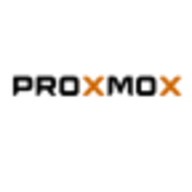

Proxmox VE and Oracle VM VirtualBox compete in the virtualization category. Proxmox VE seems to have the upper hand due to its enterprise features and flexibility.
Features: Proxmox VE excels with bare-metal support on a range of hardware, offering no restrictions on CPU or memory, and capabilities for full and container virtualization. It includes advanced features like live migration, snapshots, and high availability. Oracle VM VirtualBox is appreciated for its performance, ease of setup, cost-effectiveness, and multi-platform support allowing different OS on a single machine.
Room for Improvement: Proxmox VE users seek enhancements in backup solutions, better storage I/O management, and GUI configuration improvements to reduce command-line reliance. Oracle VM VirtualBox could improve with more advanced networking options, enhanced GUI features, and better 3D and drag-and-drop support between host and VM.
Ease of Deployment and Customer Service: Proxmox VE is adaptable for private and hybrid clouds with extensive documentation. Community support is adequate but paid support is available for a structured experience. Oracle VM VirtualBox is ideal for on-premises use with a straightforward nature, mainly relying on self-service support and community documentation.
Pricing and ROI: Proxmox VE offers great value as open-source software, with optional low-cost support leading to cost savings and efficient resource use. Oracle VM VirtualBox is free, attractive for budget users, but might incur additional investment for enterprise features affecting long-term ROI.
I did not perform any long-term stress tests, just for a couple of hours or days on every application.
Their forum and documentation is more than enough for technical support.
The snapshot functionality in Oracle VM VirtualBox is effective for management purposes.
Having some kind of API to maintain Oracle VM VirtualBox would be beneficial.
In the enterprise scenario, all software solutions, including Oracle VM VirtualBox, are expensive.
Its snapshot functionality helps with backup management.
The guest OS compatibility was tremendous because I used Oracle VM VirtualBox on Linux and ran Windows applications on top of that, working seamlessly.
| Product | Market Share (%) |
|---|---|
| Proxmox VE | 15.5% |
| Oracle VM VirtualBox | 5.9% |
| Other | 78.6% |


| Company Size | Count |
|---|---|
| Small Business | 32 |
| Midsize Enterprise | 20 |
| Large Enterprise | 17 |
| Company Size | Count |
|---|---|
| Small Business | 44 |
| Midsize Enterprise | 11 |
| Large Enterprise | 10 |
Oracle VM VirtualBox is a robust AMD64/Intel64 and x86 next-generation virtualization solution that functions well for home use and is also powerful enough to handle the needs of a busy enterprise organization. This professional solution is open source and provides super-fast high performance in addition to many outstanding value-added features. VirtualBox functions effectively on Windows, macOS, Solaris, Linux, and more. Users can benefit from VirtualBox's dedication to continually developing the product and providing continual progressive updates and releases. The solution is supported by a trusted dedicated professional community and is backed by Oracle, which guarantees that the product is able to consistently meet and exceed quality controls and protocols at all times.
Oracle VM VirtualBox Features
Oracle VM Virtual Box provides many value-added features. Some of these features include:
Reviews from Real Users
“Oracle VM VirtualBox is easy to use and does not require much training. It uses fewer resources. Teams using new operating system releases can quickly test and implement. This would make the development of new software releases faster and easier. It also helps users to write the program, test, and support it on multiple platforms. It has a good community as it is open-source.” - Satishbabu G., Oracle ACE
“It is easy to use and does not require complex knowledge. It uses less resources, which is a requirement as it is used to onboard hardware with very little resources available.” - A PeerSpot user who is an IT Architect - AI at CGI
Proxmox VE is a complete virtualization management solution for servers. It is a powerful open-source platform and supports two virtualization technologies - KVM (Kernel-based Virtual Machine) for virtual machines and LXC for containers. Proxmox VE has a central user interface that allows you to manage not only VMs and containers, but also storage resources, network configuration, and high availability for clusters. It is enterprise-ready and is valued for its scalability and maximum flexibility, enabling you to virtualize very demanding workloads. Proxmox VE makes it possible for you to easily install, manage, and monitor hyper-converged (HCI) data centers.
Proxmox VE Key Features
The Proxmox VE platform has many powerful features, including:
pen-source software, high-available clusters, command line, fencing, a web-based management interface, flexible storage options, REST API, live/online migration, storage replication stack, software defined storage, virtualized networking, backup and restore, two-factor authentication, role-based administration, and VM templates and clones.
Proxmox VE Benefits
Some of the biggest benefits of Proxmox VE are:
Reviews From Real Users
Here is some feedback from some of our users who are currently using the solution:
A PeerSpot user who is a director at a tech services company says, “The most valuable features of Proxmox VE are the ease of containerization. Overall the solution is generic, feature-rich, and has compatibility.”
Another PeerSpot user who is a head of IT operations at a tech services company mentions that "In addition to the virtualization, the firewall and the routing functions that it provides are valuable."
Deepen D., director and CTO at TechnoInfotech, expresses that "The feature that I have found most valuable is that its storage container, LVM, and everything else work out of the box."
We monitor all Server Virtualization Software reviews to prevent fraudulent reviews and keep review quality high. We do not post reviews by company employees or direct competitors. We validate each review for authenticity via cross-reference with LinkedIn, and personal follow-up with the reviewer when necessary.